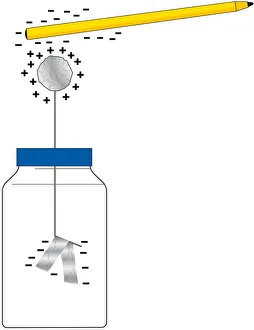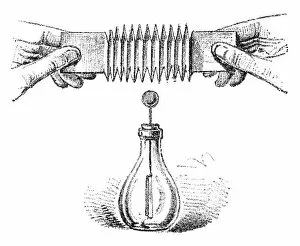Electroscope Collection
The electroscope, a fascinating electrical equipment, has a rich history in the field of physics
All Professionally Made to Order for Quick Shipping
The electroscope, a fascinating electrical equipment, has a rich history in the field of physics. It all began with Stephen Gray's groundbreaking discoveries in electricity, which laid the foundation for further exploration. In an intriguing engraving from 1833-39, we catch a glimpse of the early understanding and fascination with this powerful force. Fast forward to c1891 when electricity took center stage once again. A captivating colored engraving showcases the mesmerizing beauty and complexity of this phenomenon. The image transports us back to a time when scientists were on the brink of unlocking its secrets. Jan Szczepanik, a brilliant Polish scientist and inventor, left his mark on history with his telectroscope invention. Illustrated alongside him is a diagram that highlights his innovative creation. This digital representation reminds us of how far we have come in harnessing electricity's potential. Intriguingly, another illustration demonstrates electrostatic induction using nothing more than a ballpoint pen and jar. This simple yet effective experiment captures our imagination as it reveals one aspect of how an they are be utilized. A wood engraving published in 1880 showcases Bennet's gold leaf electroscope from 1787—an instrument that played an essential role in early electrical experiments. Its delicate design speaks volumes about the meticulous craftsmanship required during those times. Moving forward into the twentieth century, Ernest Rutherford introduced an apparatus around 1900 that measured atomic weight using radium-induced reactions within a vessel placed beneath a gold-leaf electroscope—a testament to scientific progress at its finest. Meanwhile, Marie Curie's laboratory in Paris employed an electroscope fitted with microscope for their research endeavors—providing them with invaluable insights into radiation and radioactivity during their pioneering work. Finally, we encounter an elegant depiction of an electroscope from 1897—a reminder that even after centuries since its inception; this remarkable device continues to captivate scientists and enthusiasts alike.


















